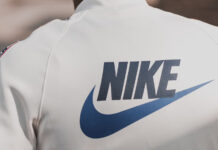The textile industry is experiencing a rapid evolution, driven by advancements in technology and a growing emphasis on sustainability and efficiency. Among the most talked-about technologies is artificial intelligence (AI). Promising enhanced forecasting, automation of manual tasks, and deeper consumer insights, AI has become a focal point of discussions in merchandise planning. However, the transition from theory to practical application remains a challenge for many companies. In this article, we will explore where AI can deliver the most measurable value in merchandise planning today, how brands can successfully integrate AI-driven forecasting and inventory optimization, and the common pitfalls of AI adoption.
The Promise of AI in Merchandise Planning
AI has the potential to revolutionize the way textile companies approach merchandise planning. By leveraging vast amounts of data, AI can analyze consumer behavior patterns, market trends, and inventory levels to make accurate predictions. This capability can help brands optimize their supply chain, reduce costs, and improve overall customer satisfaction.
Where Can AI Deliver the Most Measurable Value?
- Improved Forecasting: One of the most significant opportunities for AI in the textile industry lies in enhanced forecasting. AI algorithms can process historical sales data, weather patterns, and social media trends to predict future demand. For instance, a clothing retailer could analyze previous sales data and current fashion trends to forecast which styles will be popular in the upcoming season. By using AI-driven forecasting, brands can minimize excess inventory and reduce markdowns, thus maximizing profitability.
- Automating Manual Tasks: The textile industry is often bogged down by manual tasks such as data entry, inventory tracking, and reporting. AI can automate these processes, freeing up valuable time for employees to focus on strategic decision-making. For example, AI-powered systems can automatically update inventory levels in real-time, allowing brands to respond quickly to changes in demand. This automation not only increases efficiency but also reduces the likelihood of human error.
- Deeper Consumer Insights: Understanding consumer preferences is crucial for success in the textile industry. AI can analyze consumer data from various sources, such as online purchases, social media interactions, and customer feedback, to identify trends and preferences. Brands can use these insights to develop targeted marketing strategies and create products that resonate with their audience. For instance, an AI system could identify a rising trend in sustainable fabrics, prompting a brand to launch a new line focused on eco-friendly materials.
Successfully Integrating AI into Merchandise Planning
While the potential benefits of AI are clear, many brands struggle with integration. To successfully incorporate AI-driven forecasting and inventory optimization, companies should consider the following strategies:
- Start with Clear Objectives: Before implementing AI, companies must define clear objectives and goals. Understanding what specific problems AI will address and how success will be measured is crucial. For example, a company might set a goal to reduce excess inventory by 20% within the next year through AI-driven forecasting.
- Invest in Data Quality: AI’s effectiveness relies heavily on the quality of the data it processes. Brands need to invest in data management systems that ensure accurate, timely, and relevant data collection. This may involve cleaning existing data, integrating various data sources, and establishing protocols for ongoing data maintenance. High-quality data will lead to more reliable AI predictions and insights.
- Foster a Culture of Innovation: Resistance to change can hinder AI adoption. Companies must foster a culture that embraces innovation and encourages employees to experiment with new technologies. This can be achieved through training programs, workshops, and open communication about the benefits of AI. Engaging stakeholders from various departments ensures a collaborative approach to AI integration.
- Pilot Projects: Implementing AI on a large scale can be daunting; therefore, brands should consider starting with pilot projects. Testing AI solutions on a smaller scale allows companies to evaluate their effectiveness and address any challenges before full-scale implementation. Successful pilot projects can serve as a model for broader adoption across the organization.
Pitfalls of AI Adoption and How to Avoid Them
Despite the potential benefits, there are several pitfalls associated with AI adoption in the textile industry. By being aware of these challenges, companies can take proactive steps to mitigate risks.
- High Costs: One of the primary barriers to AI adoption is the cost associated with implementing AI solutions. Companies must evaluate the return on investment (ROI) before committing to expensive technologies. By conducting cost-benefit analyses and exploring partnerships with technology providers, brands can make informed decisions about their AI investments.
- Data Privacy Concerns: As AI systems rely on vast amounts of consumer data, data privacy concerns must be addressed. Companies need to ensure compliance with data protection regulations and communicate transparently with consumers about how their data will be used. Establishing robust data security measures will build trust and mitigate privacy risks.
- Overreliance on Technology: While AI can provide valuable insights, companies should not become overly reliant on technology at the expense of human judgment. AI should be viewed as a tool to assist decision-making rather than a replacement for human expertise. Businesses should strike a balance between leveraging AI insights and applying human intuition and experience.
- Ignoring Organizational Change: The integration of AI often necessitates changes in organizational structure and processes. Companies must be prepared to adapt to new workflows and ensure that employees are equipped with the necessary skills to work alongside AI systems. A comprehensive change management strategy will facilitate a smoother transition.
Conclusion
AI has the potential to transform the textile industry, particularly in merchandise planning. By improving forecasting, automating manual tasks, and providing deeper consumer insights, AI can drive efficiency and profitability. However, successful implementation requires clear objectives, high-quality data, a culture of innovation, and a strategic approach to integration. By recognizing the pitfalls of AI adoption and taking proactive measures, companies can navigate the hype and realize the practical benefits of AI in the textile industry. As technology continues to evolve, those who embrace AI thoughtfully will secure a competitive edge in a rapidly changing market.






























